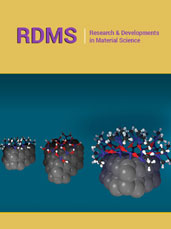- Submissions

Full Text
Advances in Complementary & Alternative medicine
Acupuncture and Anesthesia: A Review of Current Insights
Ayşegül Elbir Şahin1,2* and Hatice Selçuk Kuşderci1
1Department of Anesthesiology and Reanimation, Samsun University Samsun Education and Research Hospital, Turkey
2Traditional and Complementary Medicine Application Center, Samsun University Samsun Education and Research Hospital, Turkey
*Corresponding author:Ayşegül Elbir Şahin, Department of Anesthesiology and Reanimation, Samsun University Samsun Education and Research Hospital, Turkey
Submission: November 25, 2024;Published: January 23, 2025

ISSN: 2637-7802 Volume 8 Issue 3
Abstract
Acupuncture is a hallmark of Traditional Chinese Medicine and has been utilized for over 2000 years, with its integration into Western medicine accelerating after the 1970s. Its role in modern healthcare is particularly prominent in pain management and perioperative care. Recent findings have highlighted its physiological effects, including analgesia, sedation, and immune modulation, making it a valuable non-pharmacological tool for surgical settings. Acupuncture’s mechanisms of action are multifaceted and rooted in its influence on both peripheral and central nervous systems. Stimulation of acupoints activates afferent nerve fibers, triggering neurotransmitter release in key brain regions involved in pain modulation, such as the periaqueductal gray and nucleus raphe magnus. Additionally, electroacupuncture demonstrates frequency-dependent effects, enhancing the release of endogenous opioids like enkephalins and dynorphins. These findings underscore acupuncture’s ability to provide effective analgesia without the risks associated with pharmacological interventions.
Its incorporation into perioperative care aligns with Enhanced Recovery After Surgery protocols by reducing anxiety, minimizing anesthetic requirements, and alleviating postoperative pain and nausea. Beyond immediate surgical outcomes, acupuncture contributes to organ protection and mitigates postoperative hyperalgesia, exemplifying its potential in holistic patient care. Acupuncture’s integration into modern medicine represents a synergy of traditional practices and contemporary scientific advancements. However, standardization in education and clinical practice remains crucial to ensure consistent outcomes. As ongoing research continues to validate its mechanisms and expand its applications, acupuncture stands poised to become an indispensable component of integrative healthcare, redefining its role in pain management and perioperative medicine.
Keywords:Acupuncture; Anesthesia; Review; Perioperative care; Integrative healthcare
Introduction
Acupuncture, a cornerstone of Traditional Chinese Medicine is an ancient therapeutic practice that has been used for over 2000 years. Its global recognition began following U.S. President Nixon’s 1971 visit to China, marking a turning point in its integration into Western medicine [1]. Since then, acupuncture has attracted increasing attention from the scientific community, with ongoing studies seeking to elucidate its mechanisms of action and expand its applications. The analgesic properties of acupuncture have proven particularly valuable in medical contexts, including its use as a non-pharmacological intervention in anesthesia and perioperative care. Recent research has shed light on the biological mechanisms underpinning its effects. Mast cells, for instance, are now recognized as key players in acupuncture’s efficacy. These cells, abundant at acupoints, interact with collagen fibers, microvessels, and nerves, creating a microenvironment that facilitates the initiation of acupuncture signals. Mechanical deformation during needle insertion activates these cells, triggering the release of bioactive substances that stimulate nerve receptors and contribute to analgesia [2].
Discussion
Acupuncture’s physiological effects
Acupuncture exerts a variety of effects, including analgesic, anti-inflammatory, sedative, and homeostatic actions, as well as motor function improvement and immune system regulation [3- 7]. These effects have been widely documented and contribute to acupuncture’s broad clinical utility. Acupuncture’s role in pain management is particularly significant. Traditional Chinese Medicine attributes pain to blocked meridians, and acupuncture aims to restore their flow, reducing pain without the risks associated with pharmacological interventions [8,9]. Its ability to modulate neurotransmitter levels, such as serotonin and opioid peptides, underlies its analgesic effects. Neuroimaging studies have confirmed that acupuncture influences various brain regions involved in pain processing, including the periaqueductal gray, nucleus raphe magnus and arcuate nucleus. These findings highlight the complex interactions between peripheral and central mechanisms in acupuncture analgesia [10].
Historical development of acupuncture anesthesia
Acupuncture anesthesia was first introduced in China in 1958 for tonsillectomy and later extended to various surgeries, including pneumonectomy, cardiac surgery, and neurosurgical procedures [1,11,12]. The technique gained widespread recognition during the 1970s, reaching its peak before declining in popularity due to advancements in pharmacological anesthesia and challenges in standardizing its practice. Despite its reduced use, acupuncture anesthesia has evolved into a more integrated approach known as acupuncture-assisted anesthesia. This modern adaptation combines acupuncture with conventional anesthetic techniques, leveraging its analgesic and sedative effects to enhance patient outcomes [13]. Furthermore, acupuncture anesthesia has been incorporated into perioperative care strategies, offering benefits such as organ protection and reduced postoperative complications [14].
Mechanisms of acupuncture analgesia
The mechanisms underlying acupuncture analgesia are multifaceted. Peripheral stimulation at acupoints activates afferent nerve fibers (Aβ, Aδ, and C fibers), sending signals to the CNS. These signals are processed in brain regions such as the periaqueductal gray and nucleus raphe magnus, where neurotransmitter release, including opioid peptides, mediates pain relief. Interestingly, electroacupuncture produces frequency-dependent effects, with low frequencies releasing enkephalins and high frequencies releasing dynorphins [10]. The “chaotic wave theory” provides a novel explanation for acupuncture’s efficacy. It posits that acupuncture alters the impedance of neurovascular networks, either reflecting pain signals or rendering them undetectable to the brain, depending on the impedance match or mismatch. This theory bridges traditional meridian concepts with modern neurovascular mechanisms [15]. In addition, acupuncture has demonstrated efficacy in managing specific perioperative challenges. For example, paradoxical sleep deprivation, a common issue associated with postoperative hyperalgesia, can be mitigated by electroacupuncture. This effect is mediated through the α7nAChR-BDNF/TrkB-KCC2 signaling pathway, which regulates pain sensitivity in the spinal cord [16].
Acupuncture in perioperative medicine
Acupuncture’s integration into perioperative care is supported by its ability to reduce anxiety and stress preoperatively, minimize intraoperative analgesic and anesthetic requirements, and alleviate postoperative pain, nausea, and vomiting. These benefits align with the goals of Enhanced Recovery After Surgery protocols, which emphasize multimodal approaches to improve surgical outcomes [17-21]. Furthermore, acupuncture’s low risk of adverse effects makes it an attractive adjunct to traditional perioperative strategies. Its use as a non-pharmacological alternative is particularly valuable in the context of rising polypharmacy rates and the associated risk of drug interactions [8,9].
Global impact and future directions
Acupuncture has significantly influenced modern medicine, both as a standalone therapy and as part of integrated approaches like acupuncture anesthesia. Its development reflects a unique synergy between Traditional Chinese Medicine and Western medical principles, with applications extending beyond pain management to include organ protection and improved recovery in surgical patients [13,22,23]. However, several challenges remain. The lack of standardized training and varying practitioner expertise contribute to inconsistent outcomes, hindering broader acceptance. Addressing these issues through global standardization of acupuncture education and clinical guidelines is essential for its advancement. The ongoing exploration of acupuncture’s mechanisms, supported by advances in neuroscience and functional imaging, promises to refine its applications and enhance its scientific credibility. With a growing body of evidence supporting its efficacy, acupuncture is poised to become a cornerstone of integrative medicine, bridging traditional and modern practices.
Conclusion
Acupuncture represents a fascinating intersection of traditional wisdom and modern science. Its historical evolution from an ancient pain-relief method to a scientifically validated medical intervention underscores its enduring relevance in healthcare. By addressing barriers such as inconsistent training and expanding high-quality research, acupuncture can solidify its place in modern medicine. As its mechanisms become better understood, acupuncture may well redefine perioperative care and pain management, offering a holistic, patient-centered approach that complements existing medical practices. Acupuncture’s journey from Traditional Chinese Medicine to global recognition highlights its potential to contribute meaningfully to the future of medicine, making it a vital area for continued exploration and innovation.
References
- Litscher G, Simonis H, Kröll W (2015) Anesthesia and acupuncture. World J Anesthesiol 4(1): 1-4.
- Li Y, Yu Y, Liu Y, Yao W (2022) Mast cells and acupuncture analgesia. Cells 11(5): 860.
- Zhang R, Lao L, Ren K, Berman BM (2014) Mechanisms of acupuncture-electroacupuncture on persistent pain. Anesthesiology 120(2): 482-503.
- Chen T, Zhang WW, Chu YX, Wang YQ (2020) Acupuncture for pain management: Molecular mechanisms of action. Am J Chin Med 48(4): 793-811.
- Li YW, Li W, Wang ST, Gong YN, Dou BM, et al. (2022) The autonomic nervous system: A potential link to the efficacy of acupuncture. Front Neurosci 16: 1038945.
- Cui J, Song W, Jin Y, Xu H, Fan K, et al. (2021) Research progress on the mechanism of the acupuncture regulating neuro-endocrine-immune network system. Vet Sci 8(8): 149.
- Wang M, Liu W, Ge J, Liu S (2023) The immunomodulatory mechanisms for acupuncture practice. Front Immunol 14: 1147718.
- Qiao L, Guo M, Qian J, Xu B, Gu C, et al. (2020) Research advances on acupuncture analgesia. Am J Chin Med 48(2): 245-258.
- Zhang M, Shi L, Deng S, Sang B, Chen J, et al. (2022) Effective oriental magic for analgesia: Acupuncture. Evid Based Complement Alternat Med 2022: 1451342.
- Zhao ZQ (2008) Neural mechanism underlying acupuncture analgesia. Prog Neurobiol 85(4): 355-375.
- Asmussen S, Maybauer DM, Chen JD, Fraser JF, Toon MH, et al. (2017) Effects of acupuncture in anesthesia for craniotomy: A meta-analysis. J Neurosurg Anesthesiol 29(3): 219-227.
- Sun L, Wei X, Wang K, Ye Z, Zhou J (2024) Combined anesthesia of acupuncture-pharmacotherapy in pulmonary resection surgery: Systematic review and meta-analysis. Zhongguo Zhen Jiu 44(1): 109-122.
- Zhou J (2018) Historical review about 60 years' clinical practice of acupuncture anesthesia. Zhen Ci Yan Jiu 43(10): 607-610.
- Han JS (2016) Research on acupuncture anesthesia-analgesia. Zhen Ci Yan Jiu 41(5): 377-387.
- Chang S (2013) The meridian system and mechanism of acupuncture-a comparative review. Part 2: mechanism of acupuncture analgesia. Taiwan J Obstet Gynecol 52(1): 14-24.
- Cui YY, Xu ZQ, Qin XY, Hou HJ, Zhang J, et al. (2024) Electroacupuncture alleviates paradoxical sleep deprivation-induced postoperative hyperalgesia via a7nAChR mediated BDNF/TrkB-KCC2 signaling pathway in the spinal cord. IBRO Neurosci Rep 17: 389-397.
- Lu Z, Dong H, Wang Q, Xiong L (2015) Perioperative acupuncture modulation: More than anaesthesia. Br J Anaesth 115(2): 183-193.
- Yuan W, Wang Q (2019) Perioperative acupuncture medicine: A novel concept instead of acupuncture anesthesia. Chin Med J (Engl) 132(6): 707-715.
- Tong QY, Liu R, Gao Y, Zhang K, Ma W, et al. (2022) Effect of electroacupuncture based on ERAS for preoperative anxiety in breast cancer surgery: A single-center, randomized, controlled trial. Clin Breast Cancer 22(7): 724-736.
- Laganà AS, Garzon S, Casarin J, Franchi M, Ghezzi F (2021) Acupoint massage to manage postoperative ileus in gynecologic laparoscopy: A new potential player in the Enhanced Recovery After Surgery (ERAS) pathways? J Invest Surg 34(1): 96-98.
- Zhang T, Liu H, Li H, He S, Xiao L, et al. (2022) Effect of early electroacupuncture combined with Enhanced Recovery After Surgery (ERAS) on pain perception and dysfunction in patients after Total Knee Arthroplasty (TKA). Biomed Res Int 2022: 6560816.
- Jin L, Wu JS, Chen GB, Zhou LF (2017) Unforgettable ups and downs of acupuncture anesthesia in China. World Neurosurg 102: 623-631.
- Zhang J, Liu L, Zhu M, Zheng X, Liang Y, et al. (2023) Research status and prospects of acupuncture in perioperative medicine over the past decade: A bibliometric analysis. J Pain Res 16: 2189-2204.
© 2025 Ayşegül Elbir Şahin. This is an open access article distributed under the terms of the Creative Commons Attribution License , which permits unrestricted use, distribution, and build upon your work non-commercially.
 a Creative Commons Attribution 4.0 International License. Based on a work at www.crimsonpublishers.com.
Best viewed in
a Creative Commons Attribution 4.0 International License. Based on a work at www.crimsonpublishers.com.
Best viewed in 







.jpg)






























 Editorial Board Registrations
Editorial Board Registrations Submit your Article
Submit your Article Refer a Friend
Refer a Friend Advertise With Us
Advertise With Us
.jpg)






.jpg)














.bmp)
.jpg)
.png)
.jpg)










.jpg)






.png)

.png)



.png)






